Gender at the Olympics? the Drag Queens case hides step backwards for the LGBTQIA+ community
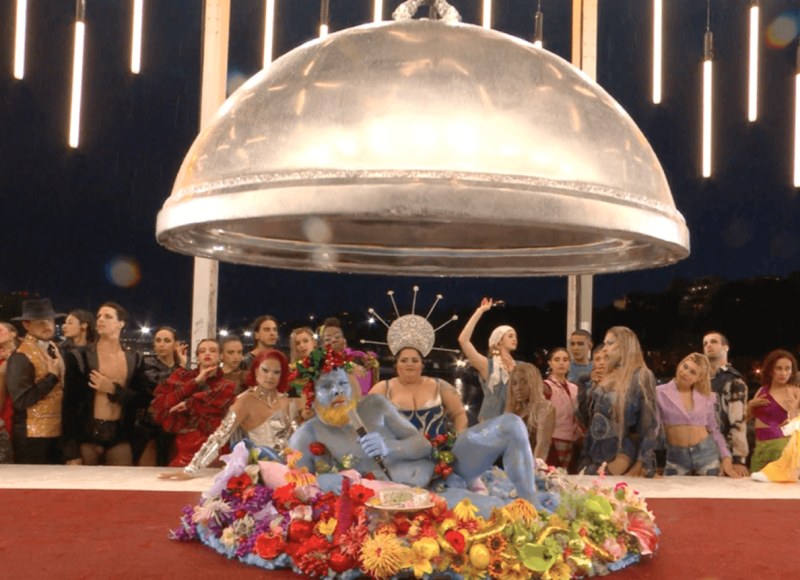
Paris 2024, the Drag Queens “scandal” at the Olympics and what we haven’t learned from the past. They mistake Greek Mythology for Leonardo, and women for men, but they call themselves “experts”.
The scripted Controversy
Paris 2024: Following the opening ceremony of the Olympics, much discussion arose regarding the Drag Queens in the alleged reinterpretation of the Last Supper or the “ménage à trois” seen during the performances of the Ceremony.
First things first, the “Last Supper” was actually a reinterpretation of the Dionysian rites, as was also confirmed by the official Olympics social media accounts during the live broadcast: “The interpretation of the Greek god Dionysus makes us aware of the absurdity of violence among human beings.”
But had that been an interpretation of Leonardo’s painting, following the hundreds of reinterpretations that have been proposed to this day, why should this one alone cause scandal? Maybe this is because of the way drag queens’ irony and lightheartedness dismantle stereotypes and sexophobia still frightens many people.
In 2024, some people really seem frightened by the beautiful representation of a carefree and light-hearted eroticism between three androgynous figures, two interpretable as female and one as male, chasing each other in a library after reading a passage by Victor Hugo, “The freedom to love is no less sacred than the freedom to think,” and then miming kisses and embraces before locking themselves in a room. “For the first time, eroticism between three people appears for worldwide viewing, without filters (image from Gay.it).”
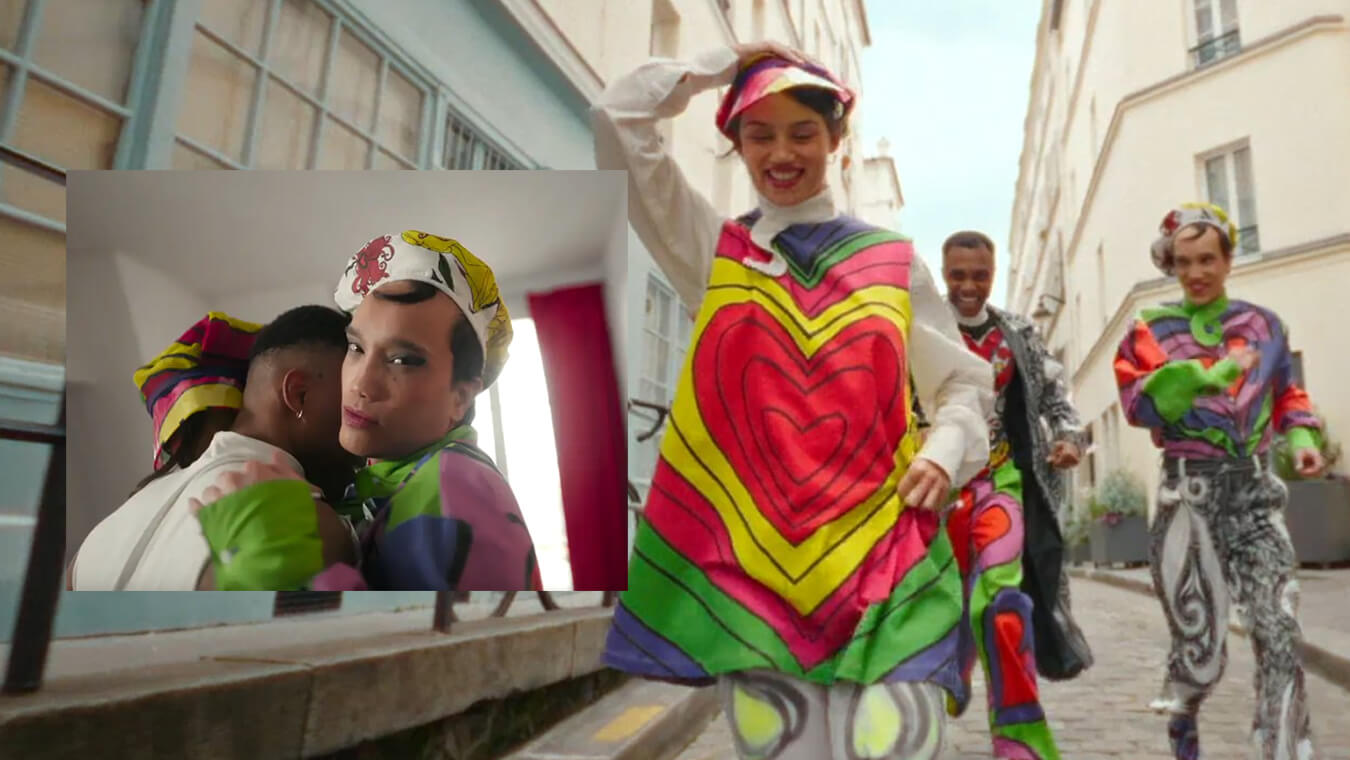
Olympics and Gender Equality
On the field, these Olympics are the first with actual parity between men and women. The first Olympics open to women took place in Paris in 1900: there were only 22. Pierre De Coubertin, the founder of modern Olympic Games, thought women’s sports were among the most unaesthetic things to witness and watch. It was the end of the 19th century, and luckily, we saw a lot of progress since then.
However, these new Paris Olympics also present some steps backward compared to Tokyo 2020. Openly LGBTI athletes have steadily increased in recent years, from 11 in Athens 2004 to 186 in Tokyo 2020, almost triple compared to Rio 2016 (53) and nearly 10 times compared to London 2012 (23). This year there are 191, just a few more than the previous edition, an extremely limited increase. The vast majority of those coming out are women, with a ratio of 9 to 1 (Data from Outsports.com, graph from Gaynet.it).
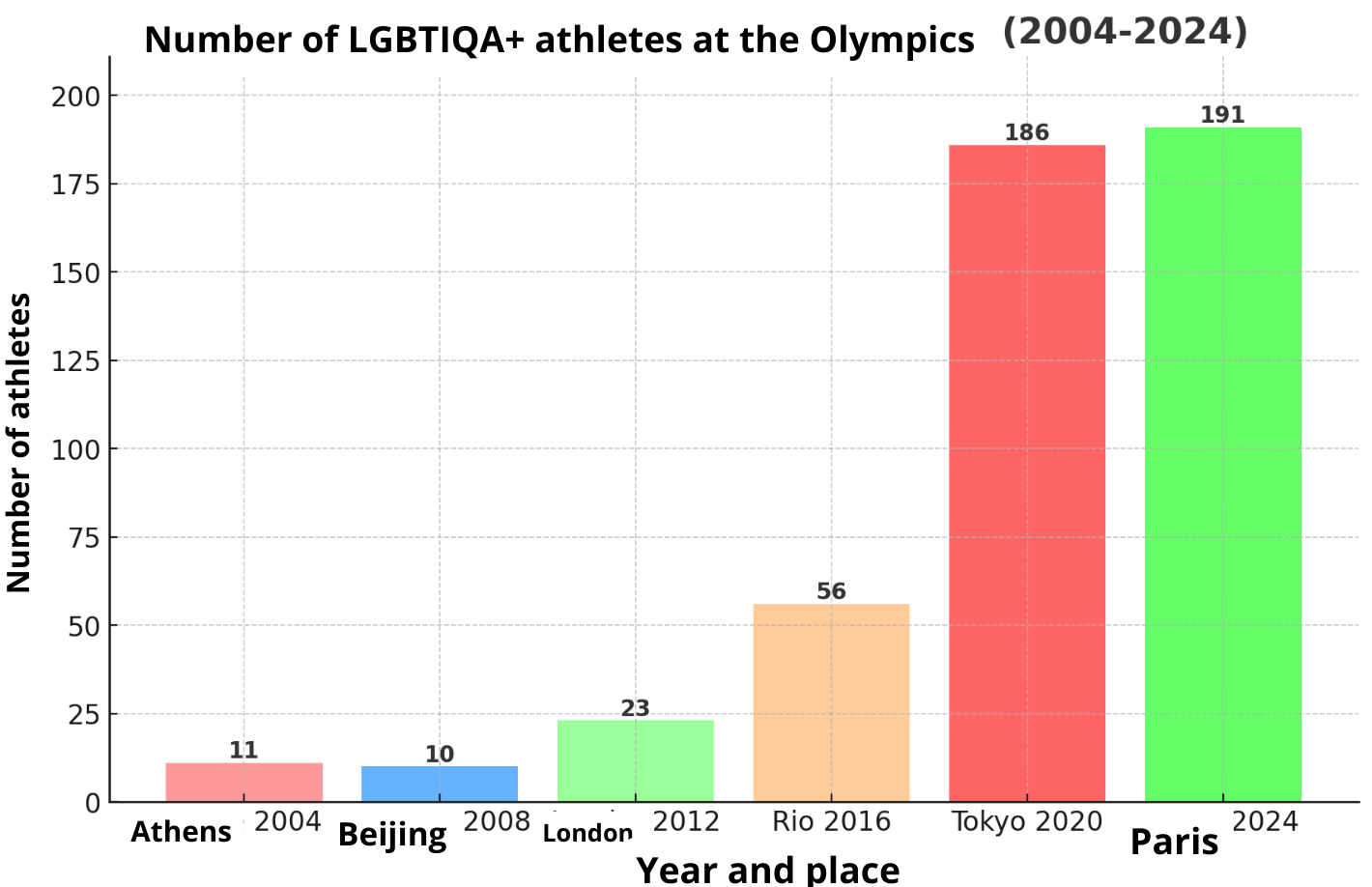
2024 Olympics Without Trans Women
According to the IPSOS Pride 2023 report, LGBTQIA+ people worldwide are about 9%. In Paris, with over 10,000 athletes, we should see about 900 LGBTQIA+ athletes.
But the bigger issue is that after the presence of Laurel Hubbard in 2020, a New Zealand weightlifter eliminated in the first round, we have an Olympics without trans women, as sports federations have adopted stricter rules than those of the International Olympic Committee (IOC).
The IOC, in its new 2021 guidelines, reiterated the principles of inclusion, bodily integrity, and scientific evidence for formulating any restrictions. However, many federations only allow trans women who started gender affirmation before puberty to compete in female categories.
This has excluded many trans athletes who suddenly found themselves barred from competitions. The criteria, launched by the Swimming and Athletics federations, use the statistics of cisgender men and women, while the new study supported by the IOC emphasizes that this evidence is not sufficient. Trans women with a year of hormone therapy, for example, have some structural disadvantages compared to cis women in terms of aerobic capacity, respiratory capacity, and counter-movement jumping.
Criteria and Exclusions
According to IPSOS Pride 2023, trans people represent about 1% of the population, so in theory, we should have about a hundred participants, rather than none.
Athletes like Italian sprinter Valentina Petrillo, who will compete in Paralympic athletics as a visually impaired athlete, are now completely out of sports as trans women due to even stricter criteria than those which were used before the 2021 shift, which focused on testosterone reduction. Athletes who have undergone heavy and invasive treatments to modify hormonal parameters and be able to compete suddenly found themselves excluded with the new rules, which came into effect without taking individual careers into account and with retroactive effect.
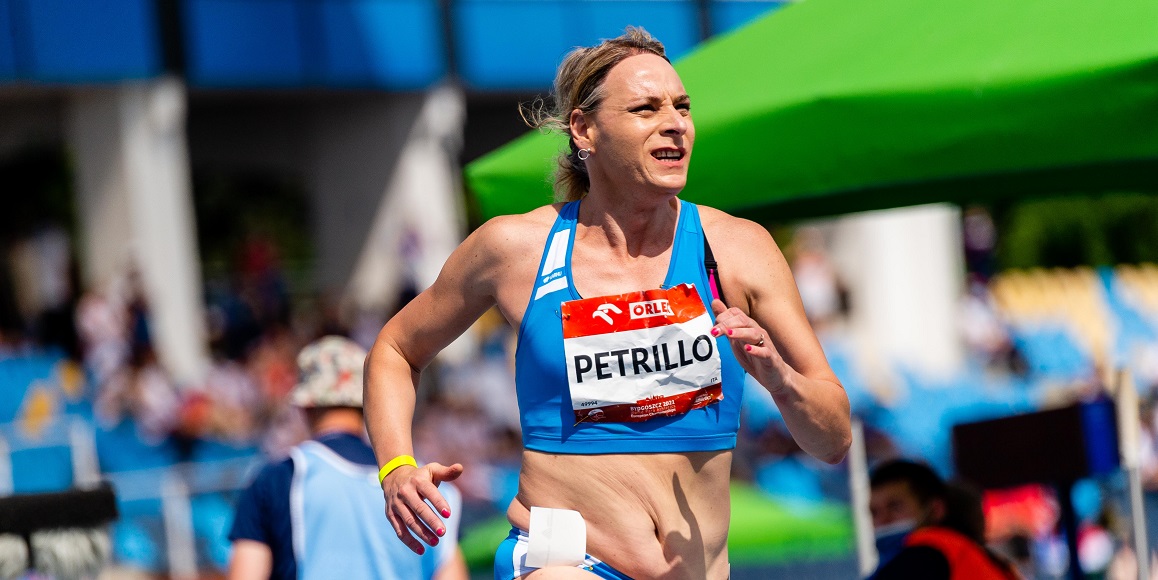
Valentina Petrillo
Positive Notes
A positive note concerns two openly non-binary participants, Quinn and Nikki Hiltz. Both have always played in female categories and do not face the same problems as trans women regarding sports participation. Their presence as openly non-binary athletes, however, highlights one of the most emerging identities of the LGBTQIA+ community: according to IPSOS Pride 2023, non-binary people are 3% among Generation Z and 1% of the global population.
The Latest Research
Looking at the latest European researches in the field such as SGS, we see that over 80% of people who practice sports believe that sexism and homotransphobia are serious or very serious issues in sports, and that half of them have witnessed sexist language in sports contexts.
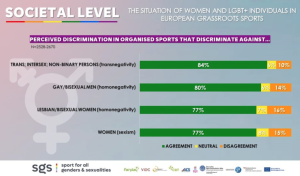
Perhaps, instead of throwing tantrums because of the drag queens at the Olympics, many people should rather be outraged at the exclusion from sports of too many categories who face hostile and discriminatory environments and are denied universal human rights.
Rosario Coco, Andrea Giuliano